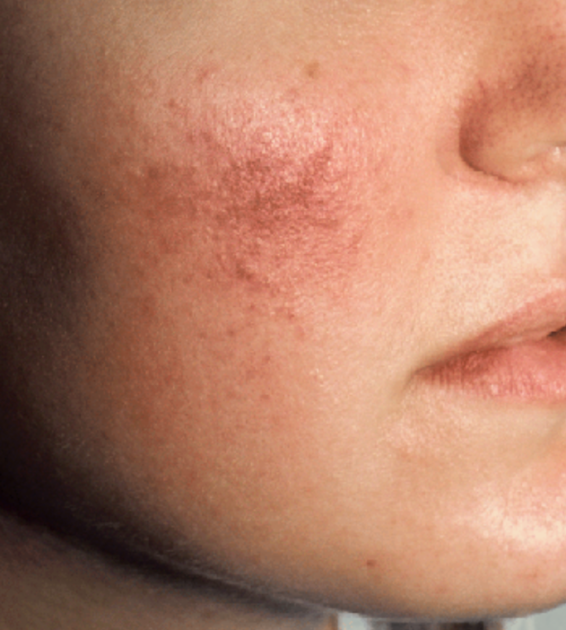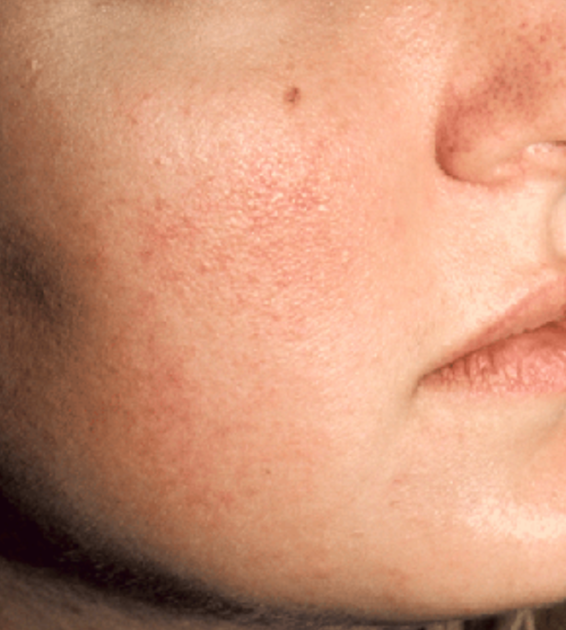Managing Embarrassing Facial Flushing & Redness
What is Rosacea?
Rosacea (pronounced roh-ZAY-sha), is a common inflammatory skin condition that usually only affects the face and eyes. Characterized by redness, pimples, and broken blood vessels, Rosacea is more common in fair-skinned people. It is often mistaken for adult acne.


Common Rosacea Symptoms: Rosacea causes a range of symptoms that may include
- Redness,
- Uncontrollable blushing
- Swelling
- Visible blood vessels
- Bumps or pimple-like blemishes
- Skin thickening and enlargement of the nose (mostly in men)
People who have Rosacea usually experience periods of flare-ups and periods of remission (the decrease or disappearance of symptoms). There is often a “butterfly” pattern that is detectable on the face.
Although Rosacea is not life threatening, even mild symptoms can have a negative effect on quality of life. In recent surveys by the National Rosacea Society, nearly 70% of Rosacea patients said this condition had lowered their self-confidence and self-esteem, and 41% said it had caused them to avoid public contact or cancel social engagements.
Rosacea Treatment – Beverly Hills Dermatologist
There is no cure, but medical care is available to treat this inflammatory disorder, and help you get your life back to normal. Beverly Hills and Los Angeles Dermatologist Dr. Zaks has established a successful Rosacea management program which incorporates all the reco-gnized methods of effectively controlling and lessening symptoms. More difficult Acne Rosacea may be treated through PhotoDynamic Therapy.
What causes Rosacea?
The cause of Rosacea is unknown. An estimated 14 million
people in the US have Rosacea. Proper treatment by a caring dermatologist will help you manage your Rosacea. Knowing your Rosacea “triggers” and proper skin care goes a long way toward having skin that is calmer and less reactive.
Ocular (Eye) Rosacea
About 50% of Rosacea suffers have eye symptoms which may include:
- redness
- burning
- tearing
- inflamed eyelids
- sensation of a foreign object in the eye
Medical Management of Rosacea
There are a multitude of Rosacea “triggers”. From food to stress, it is integral to your treatment success to learn your triggers and do what you can to avoid them.
Treatment combinations may include oral and topical medica-
tions and Vbeam vascular laser which Dr. Zaks finds very effective to target specific small broken vessels.
Most Rosacea patients need combination therapies for the most effective results. New oral medications are now available which are proving to be very helpful. Rosacea which is left untreated can cause irreversible skin thickening and disfigurement.
Basic Rosacea Treatment:
- Topical antibiotic treatment.
- Oral or topical retinoid therapy
- Azelaic acid or Metrogel
- Oral Rosacea medication (Oracea)
- Sunscreen – Important!
Avoid These Topical Skin Treatments
Topical steroids are used to reduce inflammation in a variety of skin disorders. They are not generally the best choice for Rosacea treatment, however. Topical steroids actually make many people’s Rosacea worse. Most topical steroids are only available by prescription, but some less potent products are available over the counter. Unless recommended by your health professional, avoid using them.
Remember Rosacea is not acne. Benzoyl peroxide, the ingredient found in most acne creams, should also be avoided as it can aggravate the condition.
Practical Makeup Tips
Masking the redness of Rosacea is no small matter for women. Green tinted moisturizers and color-corrective mineral makeup are helpful in neutralizing and camouflaging excessive redness.